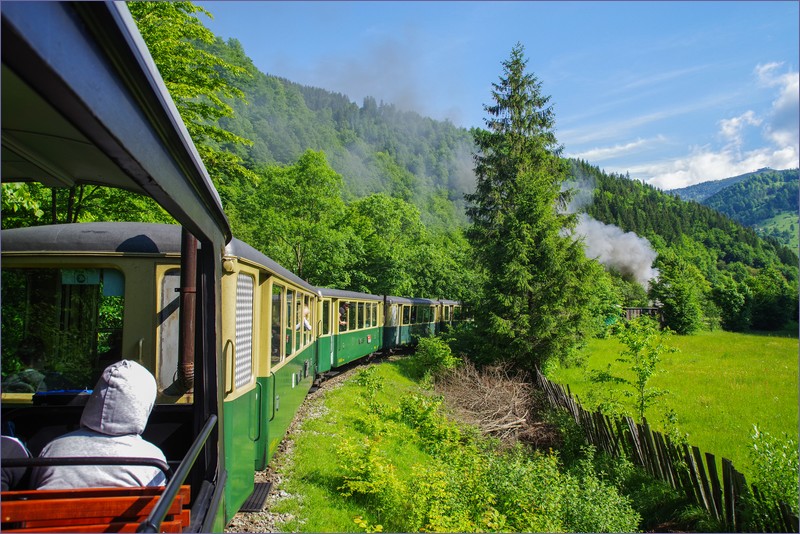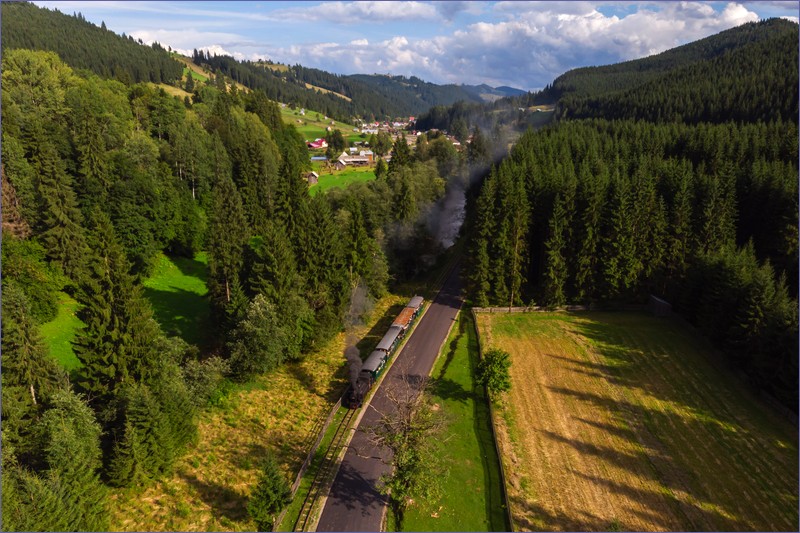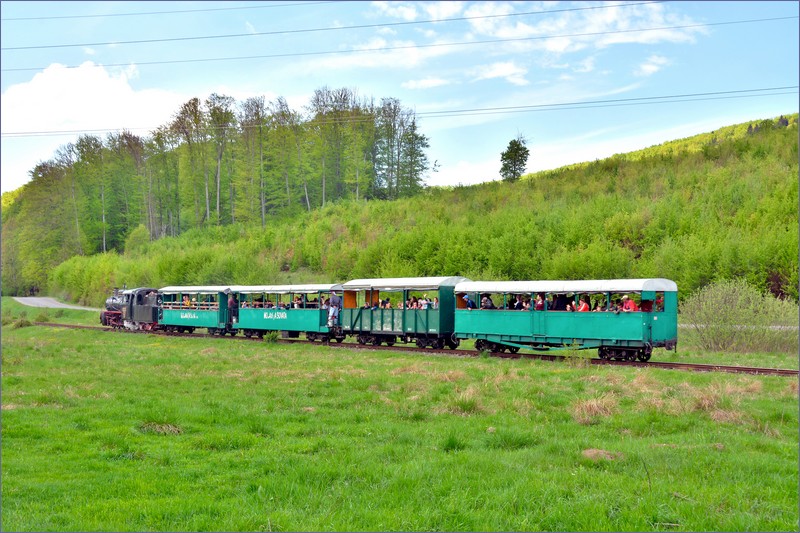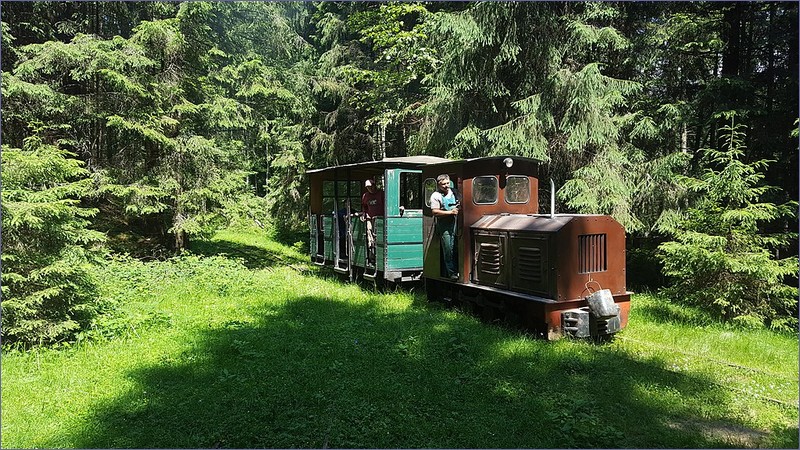In the past, Romania had a extensive network of narrow-gauge railways. Only a few railway lines have survived to this day. Narrow-gauge railways in Romania are popular among local and tourists. Typically trains operate seasonally or on certain days only. Steam hauled narrow-gauges are named “Mocănița”. Preserving of the old railway lines has become a priority for many local authorities and there are plans to reinstate some of abandoned narrow-gauges in Romania.
Narrow-gauge railways in Romania
Vaser Valley Forest Railway – the only active narrow-gauge railway from the former Carpathian forest railways network. Most famous narrow-gauge railway in Romania. It is located in Viseu de Sus, near the border with Ukraine. Steam hauled train runs once a day from Viseu de Sus to Paltin (21.6 km) and back all year long. The route is very scenic. 760 mm gauge.
Vaser Valley Forest Railway – official website

Mocănița Moldovița – a narrow-gauge line built in 1889 by Louis Ortieb, an owner of a local sawmill. It was used to transport timber from the forests to the sawmill. In 1909, the line came under the ownership of the Church Fund, and the tracks were converted from 800 mm to 760 mm gauge. Initially, the route was 23.9 km long. The network gradually expanded, and at its peak, the entire network had 73 km of tracks. The railway was in use until 2001 when it was closed, and parts of the track were dismantled. Tourist trains have been running since July 2005.
Currently, trains run on two routes:
Moldovita – Argel (12 km, steam hauled trains)
Moldovita – Vatra Moldovitei (5 km, diesel hauled trains)
During stop at Vatra Moldovița passengers can visit the Moldoviţa Monastery.
Mocănița Moldovița – official website

Mocănița Sovata – a narrow-gauge railway operating on selected days between Sovata and Câmpu Cetății (14 km). The route is a stretch of the former narrow-gauge line from Târgu Mureș to Praid, opened in 1902 and closed in 1997. In 2011, tourist services were reintroduced on this section of the line. The return journey takes two hours.
Mocănița Sovata – official website

Mocănița Abrud – Câmpeni – an interesting narrow-gauge railway that is a small part of the former Turda – Abrud narrow-gauge line. The entire line once was 94 kilometers long and operated from 1912 to 1997. Steam hauled trains operate on selected days from April to September. The train can accommodate 54 passengers, but if there are fewer than 20 people interested, the service will be canceled. The journey covers 11 kilometers, taking 2-3 hours for a round trip.
Mocanita Abrud – Campeni – official website
Mocănița Brad – Crișcior – a narrow-gauge railway used for coal transport from Tara Motilor to the Gura Barza gold mine from 1907 to 1998. It was rescued from closure by an immigrant from Austria, George Hocevar. After closure of the line, tourist trains were launched in 2001.
Currently, trains run on selected days in April and from July to September (with only single runs in May and June). The length of the Brad-Crișcior route is only 7 kilometers and the journey time is 45 minutes The rolling stock consists of a steam locomotive imported from Austria and four carriages.
Mocănița Brad – Crișcior – official website
Sibiu – Agnita Railway – a scenic narrow-gauge line that originally ran from Agnita to Sighisoara. The section from Sighisoara to Sibiu was closed on June 1, 1965. There was a gradual decline of the entire line in next years. On 1 September 2001 the Sibiu – Agnita section was closed to the traffic. Currently, there are short rides from Cornățel station (7 km) – usually diesel hauled trains. It is possible to take a ride on a handcar over a short section of the track.
Sibiu – Agnita Railway – official website
Mocănița Covasna – Comandău (probably closed) – a former forest railway. It was built in 1882 to transport timber from the surrounding forests to Covasna. The timber industry grew rapidly, and the railway was quickly expanded. In 1890, there was a need to connect two sections of the railway, but the slope was too steep for locomotives and wagons. A unique solution was applied – a gravity-powered funicular railway.
The decline of the railway began in the 1960s due to increasing competition from road vehicles and due to natural disasters such as floods and landslides. The closure and dismantling of sections of the rail network took place in the 1990s, and in 1999, trains ceased to operate on the last section from Covasna to Comandău.
In 2004 tourist trains were inaugurated. Trains ran between Covasna a Comandău (20 km) and there were plans to extend the line from Comandău to Holom (7 km). Current status is unknown – trains probably don’t run but I can not verify it.
Related articles:
